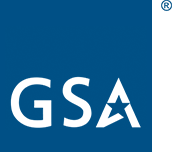Working effectively & inclusively with your Deaf and Hard of Hearing colleagues
Tips for working effectively & inclusively with your Deaf and Hard of Hearing colleagues at TTS:
- Ask the Deaf person you’re working with what is most helpful to them in terms of communication approaches.
- Share agendas and meeting materials ahead of time whenever possible.
- Recognize that it may be difficult or impossible for a Deaf colleague to multi-task during a meeting. Asking them to look at a document is asking them to shift attention away from interpreter or captions and reduces their ability to participate in the conversation.
- Chatter on calls is hard to participate in and hard for interpreters to parse — make room for pauses.
- On video calls, use the hand raise feature to minimize people speaking over each other, which is difficult for interpreters to relay.
- Practice ASL. Signing and/or spelling shows you are making an effort.
- Facial expressions, body language, and the chat are all non-verbal ways to add context and color to the meeting conversation — use them!
- When working with Deaf and/or Hard of Hearing colleagues, don’t focus on what they are (Deaf), focus on who they are.
Hosting accessible meetings
When we host a large meeting, we'll often record it so that people can watch after-the-fact.
We need both the meeting itself and the recording to be fully accessible.
That means making sure that ASL interpreters are highlighted in the recording, so that a Deaf or Hard of Hearing person can watch the ASL interpretation along with the recorded meeting.
Here's a short guide to facilitating an accessible meeting --
Before the meeting
- Request ASL interpreters and CART transcription.
- Send the interpreters and transcriber the agenda plus any presentation materials ahead of time.
- Consider using Zoom to host the meeting, since Zoom's , external,Spotlight feature allows the facilitator to spotlight ASL interpreters.
The day of the meeting
- Join the Zoom room 10 to 15 minutes early. Chat with the interpreters, captioner, and presenters to make sure all have what they need.
- Make interpreters co-hosts of the meeting.
- This allows the interpreters to pin Deaf participants during the meeting. It also allows them to Spotlight themselves.
During the meeting
- During the meeting, the facilitator needs to Spotlight each speaker when they begin presenting, and un-Spotlight each speaker after they are done.
- Actively facilitating a meeting while managing Spotlight controls as host is tricky -- consider splitting these into two separate roles and delegating.
- During the meeting, the facilitator needs to keep their Zoom set to Speaker view.
- Switching to Gallery view will affect the recording and ASL interpreters will show up as tiny thumbnails, instead of Spotlighted.

